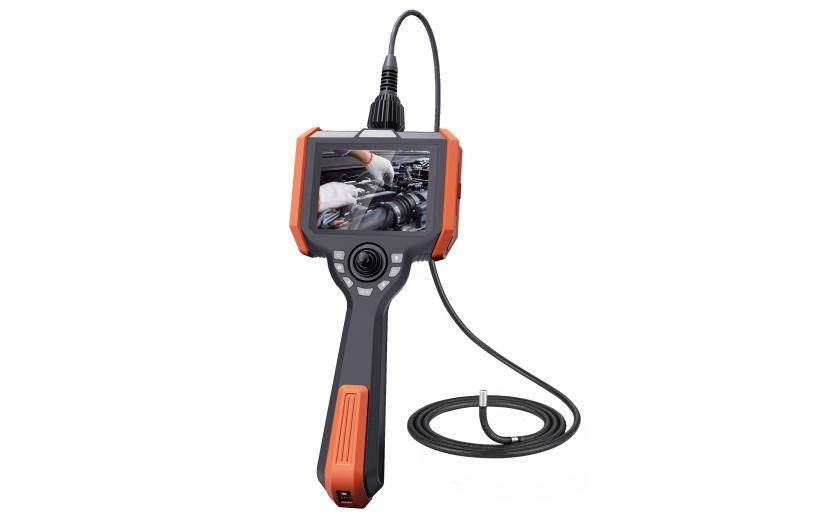Want to know more?
Don't miss any product updates on our industrial borescopes

Industrial borescope
solution service provider
Company Address
Office : 18F, Pingshanshouzuo, Pingshan District, Shenzhen,Guangdong
Contact Info
Ph: +86-0755-89588241

Reactor-related equipment
The reactor of a nuclear power plant is a core equipment, and its safe operation is crucial. Industrial endoscopes can be used to inspect containers, pipes, welds, etc. inside the reactor to detect potential defects such as cracks, corrosion, and foreign matter. For example, the industrial endoscope can detect the cleanliness of the secondary circuit of the evaporator, grab and remove foreign matter, and ensure the normal operation of the cooling system.
Pipeline system
The pipeline system of a nuclear power plant is intricate and connects various key equipment. Industrial endoscopes can go deep into the pipeline to detect weld quality, pipeline corrosion, foreign matter blockage and other problems. This is of great significance for ensuring the sealing of the pipeline system, preventing leakage, and ensuring nuclear safety.
Pressure vessels and boilers
Pressure vessels and boilers are important equipment in nuclear power plants, and they are subjected to harsh environments such as high temperature and high pressure. Industrial endoscopes can conduct detailed inspections of the inner walls of these equipment, find defects such as cracks and corrosion, and provide a basis for equipment maintenance and replacement.

Nondestructive testing
Industrial endoscope is a nondestructive testing tool that can detect and observe the internal structure of an object without disassembling or destroying the object being tested. This greatly improves the detection efficiency and reduces the time and cost loss caused by disassembling the equipment.
Reduce detection risks
In nuclear power plants, many equipment are in harsh environments such as high temperature, high pressure, and high radiation. Traditional detection methods often require personnel to enter the equipment, which poses a greater safety risk. Industrial endoscopes can be remotely controlled to avoid direct contact with dangerous environments, reducing detection risks.
Real-time monitoring and recording
Industrial endoscopes are usually equipped with high-definition camera systems and image processing software, which can monitor and record the detection process in real time. This helps inspectors to judge the equipment status more accurately, find problems in time and take measures. At the same time, the recorded images and data can also provide a basis for subsequent equipment maintenance and fault analysis.
Internal quality control after pipeline welding
During the pipeline installation process of nuclear power plants, welding quality is a key factor affecting the sealing and safety of pipelines. Industrial endoscopes can perform internal quality inspections on welds to ensure that the quality of welds meets the requirements of specifications.
Internal corrosion inspection of cooling system pipelines
The cooling system of a nuclear power plant has been eroded by high temperature, high pressure and corrosive media for a long time, and is prone to internal corrosion. Industrial endoscopes can penetrate into the cooling system pipelines to detect corrosion and provide a basis for pipeline maintenance and replacement.
Internal cleanliness inspection of high and low pressure cylinders of conventional island steam turbines
The steam turbine is one of the important equipment in a nuclear power plant, and its internal cleanliness has an important impact on the operating efficiency and safety of the equipment. Industrial endoscopes can perform cleanliness inspections on the high and low pressure cylinders of steam turbines to ensure that there are no foreign objects or dirt inside the equipment, and to ensure the normal operation of the equipment.
High-resolution images
Modern industrial endoscopes usually use high-resolution digital color CCD photoelectric coupling devices and advanced image processing technology to provide clear and realistic image effects. This helps inspectors to more accurately judge the equipment status and find potential defects.
Flexible probe design
The probe design of industrial endoscopes is flexible and diverse, and the appropriate probe type can be selected according to different inspection needs. For example, the direct-view probe is suitable for observing the plane area of the inner wall of the equipment; the side-view probe is suitable for observing the corners and hidden areas of the inner wall of the equipment.
Powerful measurement function
Some high-end industrial endoscopes are also equipped with measurement functions, which can quantitatively analyze the length, area and other data of defects. This helps inspectors to more accurately evaluate the equipment status and formulate scientific maintenance plans.
Strong radiation resistance
The radiation environment in nuclear power plants places high demands on the radiation resistance of detection equipment. Modern industrial endoscopes are usually made of special materials and processes, have strong radiation resistance, and can work normally in a certain radiation environment.

Summary
The application of industrial endoscopes in nuclear power plants has greatly improved the efficiency and safety of equipment inspection, providing a strong guarantee for the safe operation of nuclear power plants. With the continuous advancement and innovation of technology, the performance and functions of industrial endoscopes will continue to improve, providing more support for the maintenance and management of nuclear power plants.

Industrial borescope
solution service provider